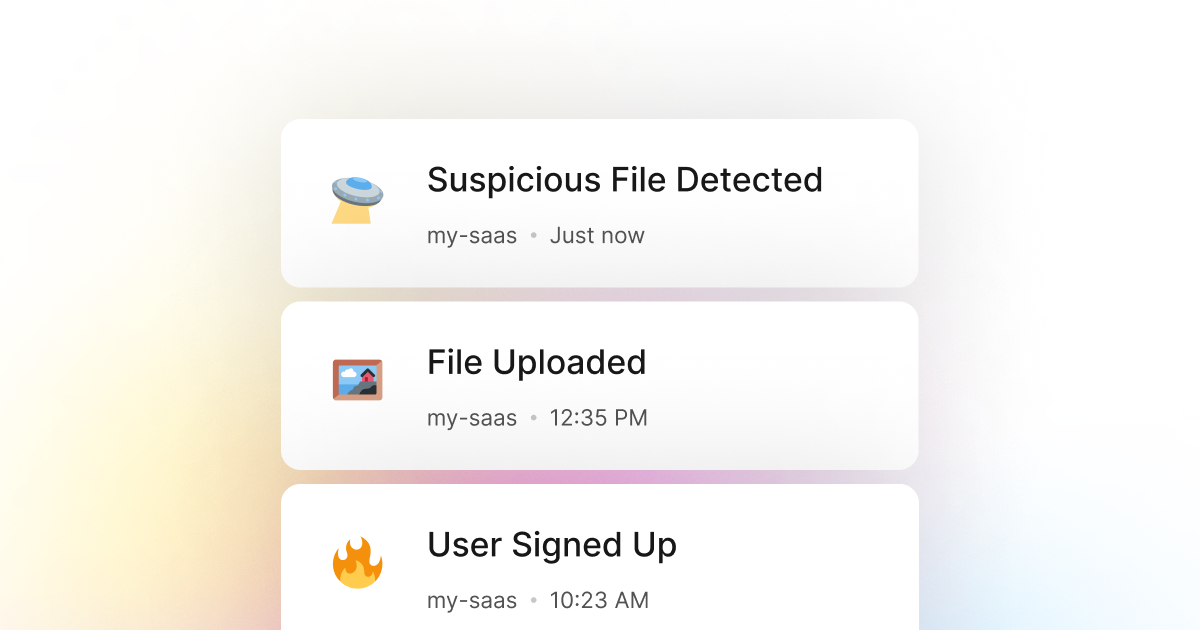When building a R application that you plan to release to the public, or even if you're building a private application, as developers, we are always looking for ways to make sure that our application is secure and that it's not being misused.
The misuse of our application can be in the form of a user trying to access data they shouldn't have access to or a user trying to perform an action they shouldn't be able to achieve. This can be a severe problem and can lead to many issues such as data loss, data corruption, or even data theft.
Thus, it's essential to set up a system to monitor suspicious activity in your R application properly and let you and your team know when something is wrong.
For example, let's say you're building a R application that allows users to upload files. One of the common concerns with this type of application is that users may try to take advantage of your service and upload files that they shouldn't be able to upload, such as illegal content, huge files, or even malware.
LogSnag is an excellent tool for this problem as it trivializes tracking events in your R application and suspicious monitoring activity. For example, you can use LogSnag to track an event when a user uploads a file. You can then set up a rule to notify you when a user uploads a file that is larger than 100MB. This way, you will know when a user is trying to upload a too large file, and you can take further action if needed.
Setting up LogSnag
- Sign up for a free LogSnag account.
- Create your first project from the dashboard.
- Head to settings and copy your API token.
R code snippets
Use the following code snippet to connect LogSnag to your R application.
Make sure to replace the YOUR_API_TOKEN with your API token and update the project and channel names.
Using R with httr
Using R with RCurl
R integration details
LogSnag is a flexible and easy-to-use event tracking service that can monitor suspicious activity in your R application. It works excellent with R and provides powerful features such as real-time event tracking, cross-platform push notifications, event filtering, user and product journeys, charts and analytics, and much more.
For example, LogSnag automatically generates user journeys for your product, and you can use this to see how your users use your application. In addition, in the case of suspicious activity, you can view the user's journey to see if they have performed any other questionable actions that they shouldn't have performed.
Here at LogSnag, we believe event tracking should be simple and accessible to every developer and team. Therefore, we have worked hard to create the next generation of event tracking tools.
LogSnag provides a generous free plan to get you started with event tracking. You can also check out our pricing page to see our paid plans. So please give us a try and let us know what you think!
Other use-cases for LogSnag
- Monitor your CI/CD build status for your R application
- Monitor your CPU usage in your R application
- Monitor when database goes down in your R application
- Monitor high disk usage in your R application
- Monitor when a user changes their email address in your R application
- Monitor failed logins in your R application
- Monitor failed payments for your R application
- Monitor memory usage in your R application
- Monitor MySQL downtime in your R application
- Monitor when a new feature is used in your R application
- Monitor your Postgres downtime in your R application
- Monitor Redis downtime in your R application
- Monitor when a user exceeds the usage limit for your R service
- Monitor when a user is being rate limited in your R application
- Get a notification when your R code is done executing
- Send push notifications to your phone or desktop using R
- Track canceled subscriptions in your R application
- Track your R cron jobs
- Track when a file is uploaded to your R application
- Track when a form is submitted to your R application
- Track payment events via R
- Track user sign in events in R
- Track user signup events via R
- Track waitlist signup events via R

